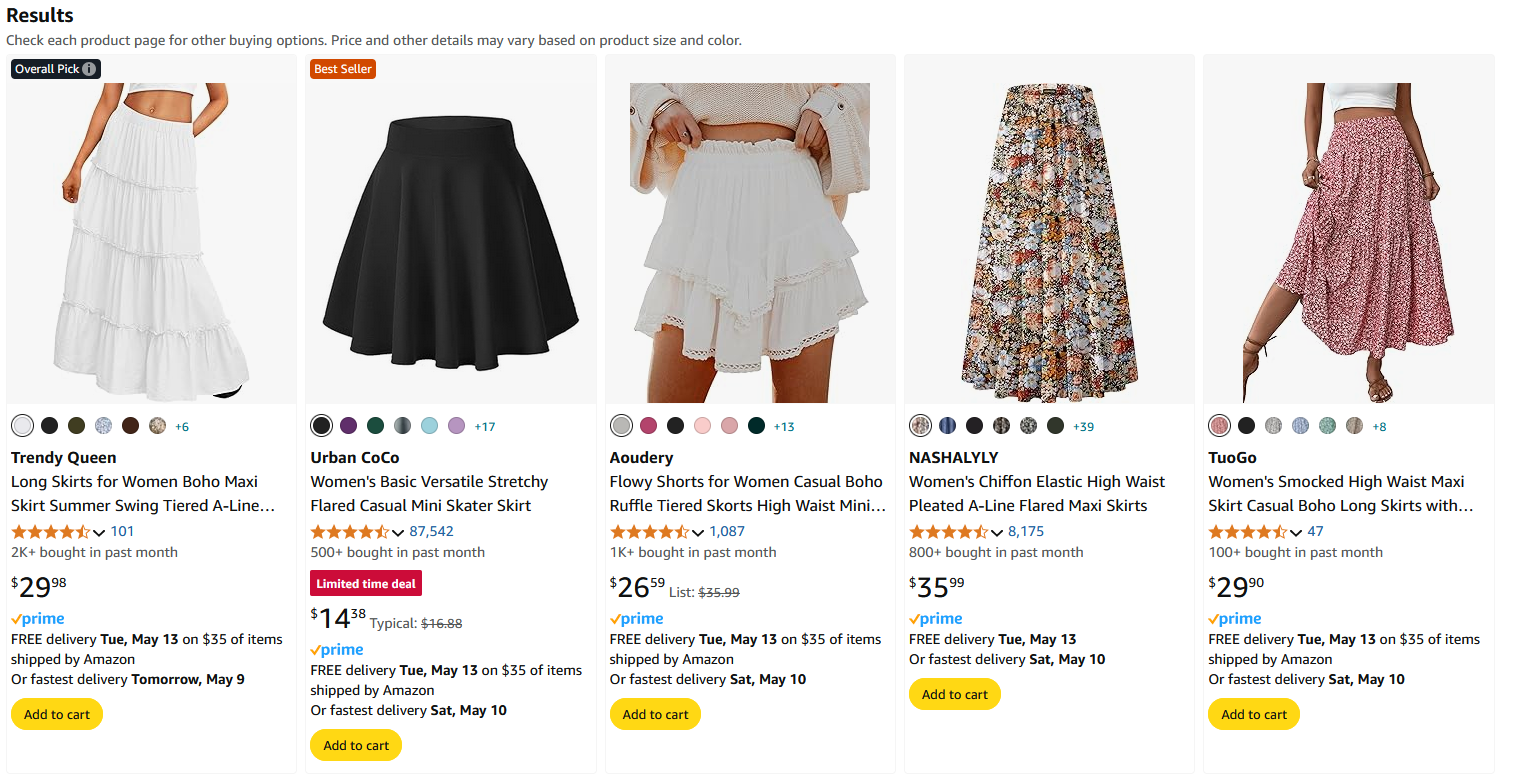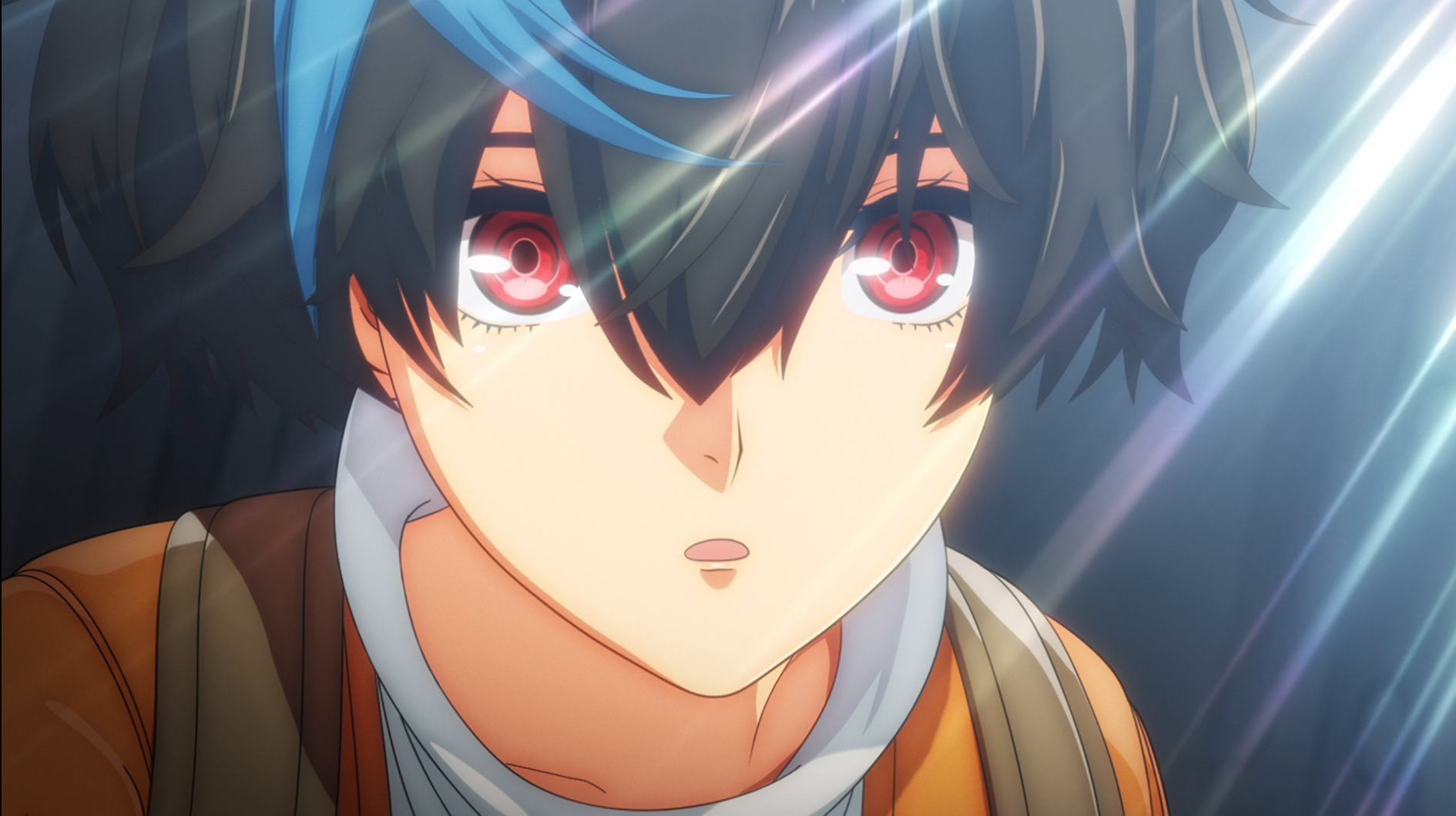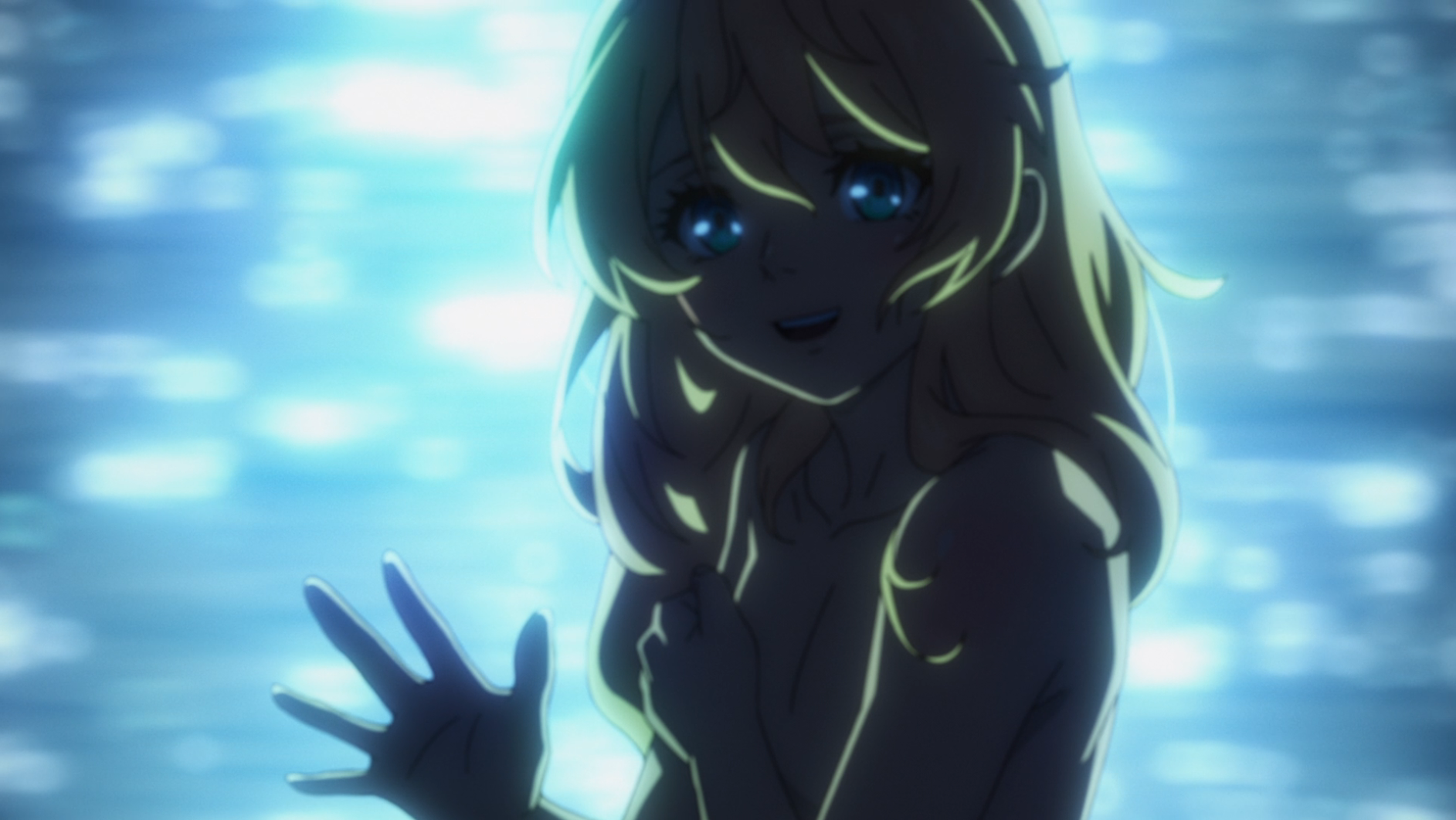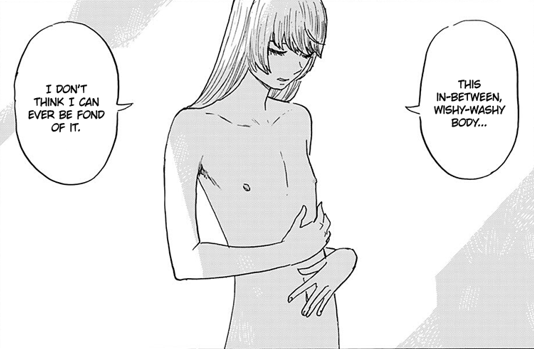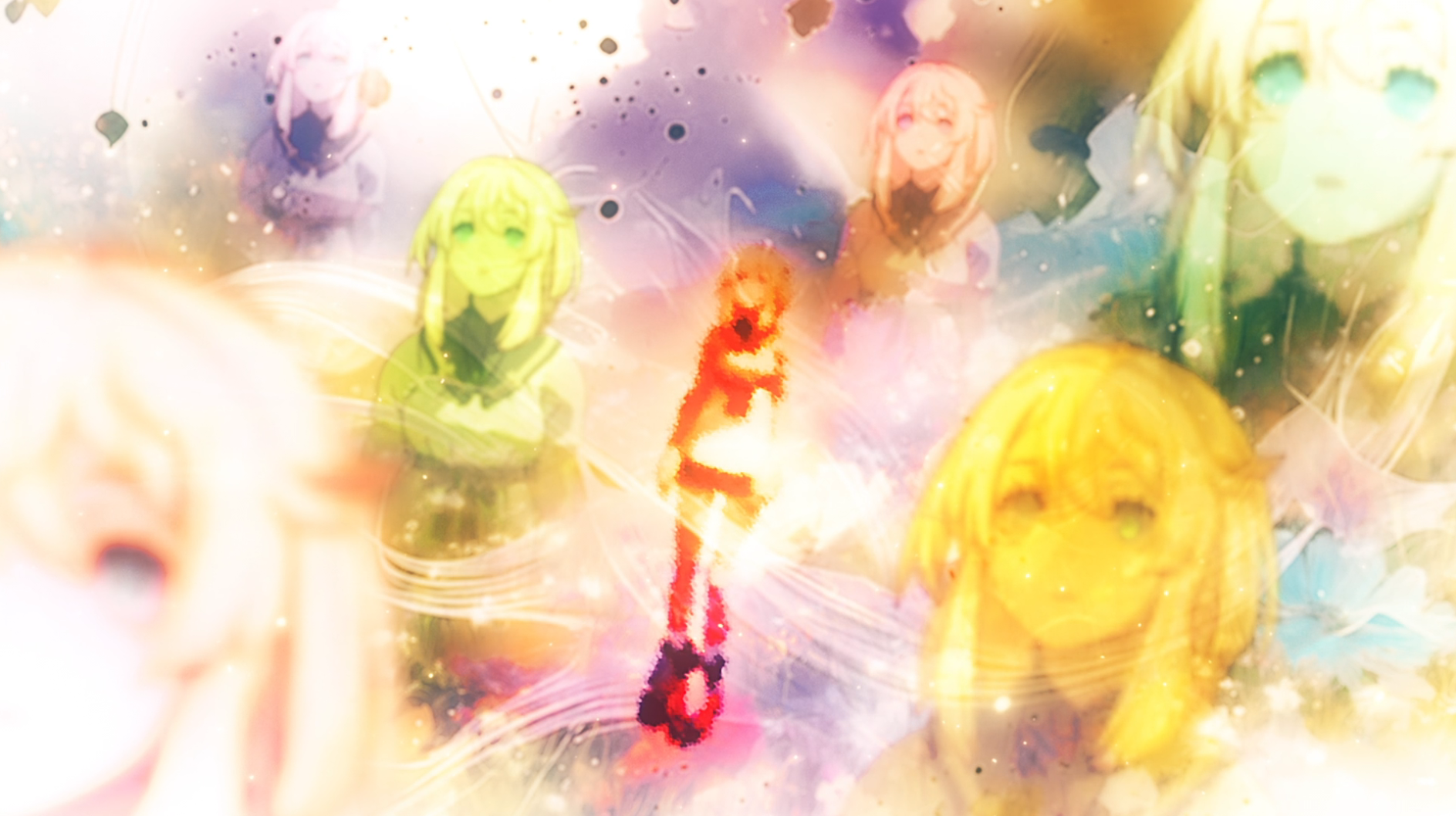What That Yo-Yo Girl Doing?
“Red sky at night, sailors delight. Red sky in morning, sailors take warning.” The color of the sky, tea leaves at the bottom of a cup or even whether you solved the wordle this morning; since times immemorial, people have tried to predict the future and understand the present. I can’t say for certain whether a stick can help you find water underground but I’ve had my own “divining rod” for the past few years; my youtube comments section. Specifically on a video I made detailing the cultural and canonical history of the character Bridget from Guilty Gear.
Around her reintroduction in Strive, I saw a handful of tweets from journalists looking for someone who could neatly summarize why their friends were feeling so hard. Late one night, I realized that my standing at the intersection of formal academic queer history and being a fan of Guilty Gear since I got a copy of Guilty Gear XX from Funcoland made me just that person. I banged out a script at 3am and had a video edited and uploaded not more than 48 hours later. The video was received like Bridget herself; generally well but seems to have made a, mercifully small, number of people really really angry.
Ever since then, I’ve had my own window into the heart of The Discourse. Judging by the number and tone of comments, I can tell when something is happening around the character and where it’s coming from. For example, comments flailing against youtube’s moderation trying to call me a slur are usually a good sign that a grifter is kicking up dust somewhere. My personal favorite is the guy who called me a “skittle person.” What were you trying to imply my guy? That I’m sweet and everyone loves me? I thought that things would eventually settle but to my surprise, the soul still burns. So I want to take some time to look at what has happened since Bridget’s reintroduction both in canon and in culture.
I linked the video above but for the sake of context I’ll try to briefly summarize. If you took the net popularity of every other character in this series, added them together and multiplied, Bridget’s solo appeal would still stand a head taller.
A major part of Bridget’s popularity has always been tied to her gender. Series creator Daisuke Ishiwatari wanted to add a “cute” character to the roster to contrast against the vampires, body horror, David Bowie and his own self-insert OC. To separate her from other similar character designs, Daisuke decided to debut Bridget as a guy who adamantly identifies as a man despite an outward feminine appearance. That single decision catapulted her to genuine icon status. The meme “Everyone is gay for Bridget”, which remains evergreen via The Impossible Quiz, is actually how I found the series and I’m sure I’m not alone.
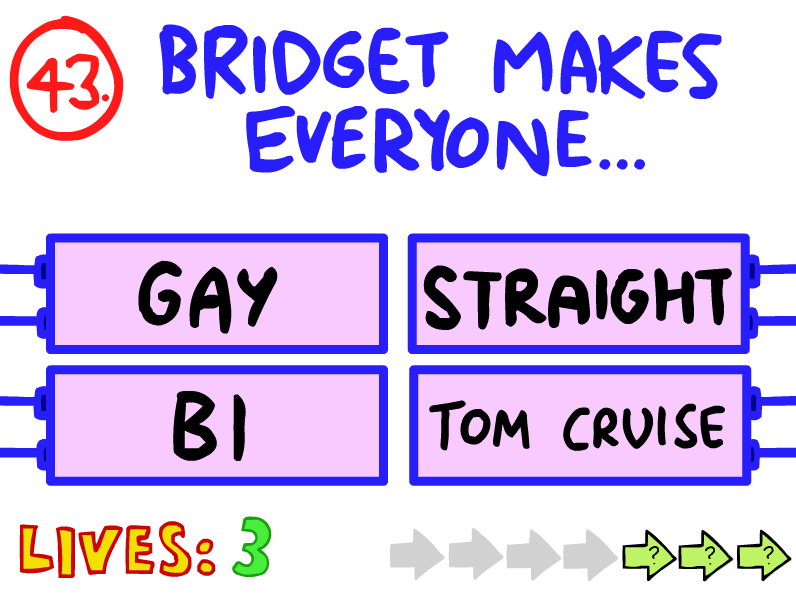
Despite her immense popularity, Bridget sat out for the Xrd series after only narrowly losing the vote contest that ultimately secured Dizzy’s spot in the game. By the time Strive was on the scene, Bridget was dominating fan polls for requested inclusions, but the world had changed a lot between Bridget’s last appearance and reintroduction. COVID-19 lockdowns had shut down many in-person fighting game events. Many competing titles waned in popularity due to their less than stellar online experience. Guilty Gear: Strive hit the scene with fancy rollback netcode which propelled it and the series to an unprecedented level of popularity. What was previously a niche title in a niche genre was now one of the biggest games in the world and the stage was set for the series to bring back this beloved character. However, Arc System Works (ArcSys) was still holding a card.
Just bringing her back to the series would make headlines and print money, but Daisuke Ishiwatari is nothing if not a real one. When the curtain opened on Bridget’s official biography those same boys that played hours and hours of Guilty Gear XX were now women seeing Bridget referred to as a girl.
After proving herself as a man, Bridget found herself feeling like something was still missing. She tried on a bunch of hats, had a heart to heart with a character that had paid her $100 to fuck off in her last in-game appearance and accepted that she needed to transition even if she was afraid it wouldn’t turn out like she hoped; making the choice for her own sake and no one else. It's a disarmingly sincere scene. I still cried watching it. I showed it to another trans friend of mine who had no knowledge of the series and he cried. You’re probably crying right now just thinking about it. It’s ok. Let it out. I’m told it’s healthy.
So to recap, the minds behind Guilty Gear Strive redebuted the series most iconic character at the height of the game’s popularity and explicitly made her a transwoman thus fulfilling the prophecy that a character would look directly at the viewer and say “I am transgender” only for fuccbois to insist they aren’t. To this very specific type of fuccboi, Bridget coming out as trans was like no fewer than fifteen simultaneous 9/11’s. The denial took the form of complaining about translations, insisting the game made by a guy naming moves after Judas Priest songs couldn’t possibly know what a gay person is, and even forging communications from ArcSys denying Bridget is trans.
A funny note about literal translation specifically. In Japanese, gender identity is communicated in the first-person via variations on “I” so it’s up to the speaker to express how they see themselves. As someone who almost exclusively uses English meaning that every new interaction with someone feels like a personal test to see how this new person perceives me, I’m a little jelly. The pronoun that Bridget uses, uchi (うち), is both extremely feminine and very casual having something of a valley girl-esque connotation. So given context, the line “うちは女の子” that Bridget says in her story mode is about as literal as you can possible be for “I am transgender.”
To their enormous credit, ArcSys stayed the course. Certified real one Daisuke Ishiwatari even channeled Marty McFly in an interview confirming that this was always his plan for the character but it wasn’t until now that he felt the world was ready for this story to be told.
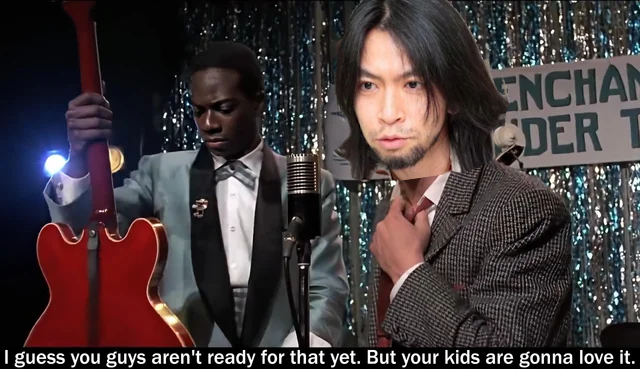
Contrast that with Kadokawa’s handling of Mobile Suit Gundam: The Witch from Mercury. The series ended with the two women leads very clearly married. Like, a gay marriage for gay people who are gay. Kadokawa responded by pulling down comments from staff about the characters being married and releasing a statement that the ending was “open to interpretation”; downplaying the clear intention of the artists. The staff behind the show later released an artbook including depictions of their wedding and series director Hiroshi Kobayashi eventually confirmed the marriage but corporate cowardice had cast a cloud over the series finale.
Back to the point of departure, the new pronouns did little to hamper Bridget’s popularity. If Bridget was lightning, merchandise was thunder. Figures, standees, keychains, recolors of previously released figures, plushies, etc; the list goes on and on and on and on. When a brand collaboration rolls around, such as the promotion with Tower Records, it’s safer to assume Bridget will be part of it than the actual protagonist of the story.
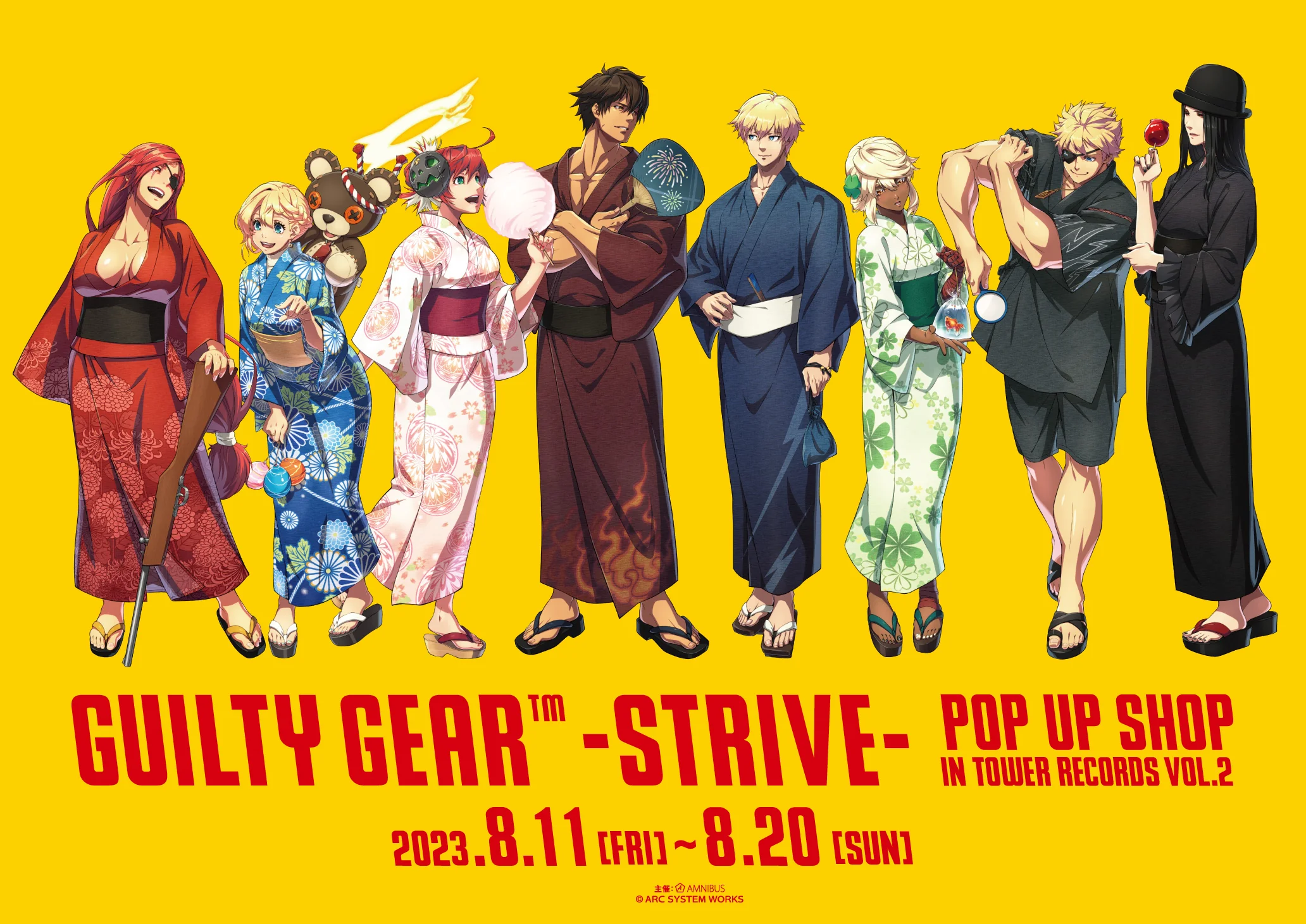
It’s not uncommon to see fans of other characters complaining about their respective fav’s comparative lack of merchandise. I also complain but for a different reason. I buy a lot of that merch and youtube ad revenue only goes so far. Even then, it’s pretty special to see a trans character centered in promotional material like this with such an enthusiastic response from fans.
I joked with a friend that I was going to walk through the artist alley at Magfest and buy every Bridget charm and print I found. I was quickly forced to abandon my grand plan when I realized this was going to cost me many hundreds of dollars and I was barely more than halfway through the hall.

someone who is good at the economy please help me budget this.
There’s also been an important cultural shift happening concurrently in the competitive scene around the game. There is a perception that the fighting game community is pretty dang gay. There’s even a joke that runs the circuit about how gay people must be inherently good at fighting games because so many strong players are out. That wasn’t always the case. The reason you saw so many strong gay players is because many of those that didn’t win were harassed out. If you were good enough at the games, even the most vile homophobes might pretend not to notice so they’d have more strong players to practice with.
It’s something I personally experienced. Now, I may be a washed old lady now but I used to throw a burst I tell you what. There was a time where I could travel to a city I’d never been to and people there would know who I was; a known player. After moving to a new area of the country, the locals were extremely welcoming. After I joined their discord though, I quickly found that they were pretty fast and loose with homophobic slurs just not when I was around. I got the feeling they respected me as a player but not as a person and stopped going to locals in favor of doing literally anything else with my time.
In the grand scheme of things, I still had it pretty easy. The stories I’ve heard from people who came out before me about the things said to them, about them or the times they were made to feel unsafe are not mine to tell but harrowing nonetheless. I can however tell the story of how the first match I ever played in a tournament had my opponent’s friend yelling slurs in my ear while no one in the ballroom said or did anything. I wasn’t even out at the time so that might have been the hardest read he’ll ever make in his life. You had to have real dedication to put up with even a fraction of that and keep showing up, so maybe it’s not a shock that the ones who stuck around became so strong.
Thankfully, that no longer seems to be the case. The culture was already moving in a more accepting direction, but I can only imagine that the biggest game in the community having a canonically transgender character at the front of their marketing helped speed things along. The energy may have already been there but Bridget was a lightning rod for it to strike.
Walking around Combo Breaker in 2024 felt like a different planet compared to when the event started in 2015. I felt like I couldn’t turn a corner without seeing The Skirt. Even if you don’t know The Skirt, you know The Skirt. It’s that skater skirt that comes up as one of the first results for “skirt” on amazon. It’s inexpensive, flattering and perfect for someone who is both too anxious to shop in-person and trying to build a femme wardrobe. So many transfemmes have independently converged on The Skirt that it’s become something between a meme and a rite of passage.
And you know what, everyone I saw wearing it also looked happy to be there and comfortable with themselves. I imagine some of them are earlier in their process and figuring their shit out. That someone might choose an event like Combo Breaker to be one of the first places they try to be themselves at and that they can feel safe doing so is something the organizers and community should be proud of.
I can’t say that was true more than a few years ago. I also picked a fighting game tournament as one of the first times I presented femme. I was asked to play on stream and was so stressed about the looks I had already been getting in the venue and how many people were watching the stream that I have no memory of the actual match. Afterward, I went back to my hotel room, threw up and cried. Would not recommend it. Two thumbs way way down.
I can only speak anecdotally here, but I’ve had a number of comments over the years since Bridget’s release from people who picked up the game specifically because of how well ArcSys had handled Bridget’s character. I can imagine a timeline where a queer person picks up the game because they heard about Bridget being trans. Maybe that person gets bored of netplay and wants to feel their opponent's soul leave their body as their burst is burgled. They start going to events and in doing so they meet like minded people; finding community both in and out of the games.
Bridget’s story has also made the jump to broadcast television. Many years ago, the Guilty Gear X opening seeded the possibility of a Guilty Gear anime and Guilty Gear Strive: Dual Rulers fulfilled that idea. As you might expect at this point, Bridget factored into trailers for the series. However, I wasn’t prepared for what the longtime series writer, Norimitsu Kaihō, and the rest of the staff were cooking. I will also confess that I’ve only watched the fourth episode of the series as of writing. I’m already watching more weekly shows this season than I watched all of last year and was going to wait until this one finished before starting it. However, my social media feeds filled up with screenshots and yuri fanart. I was curious. I am, after all, a simple woman.
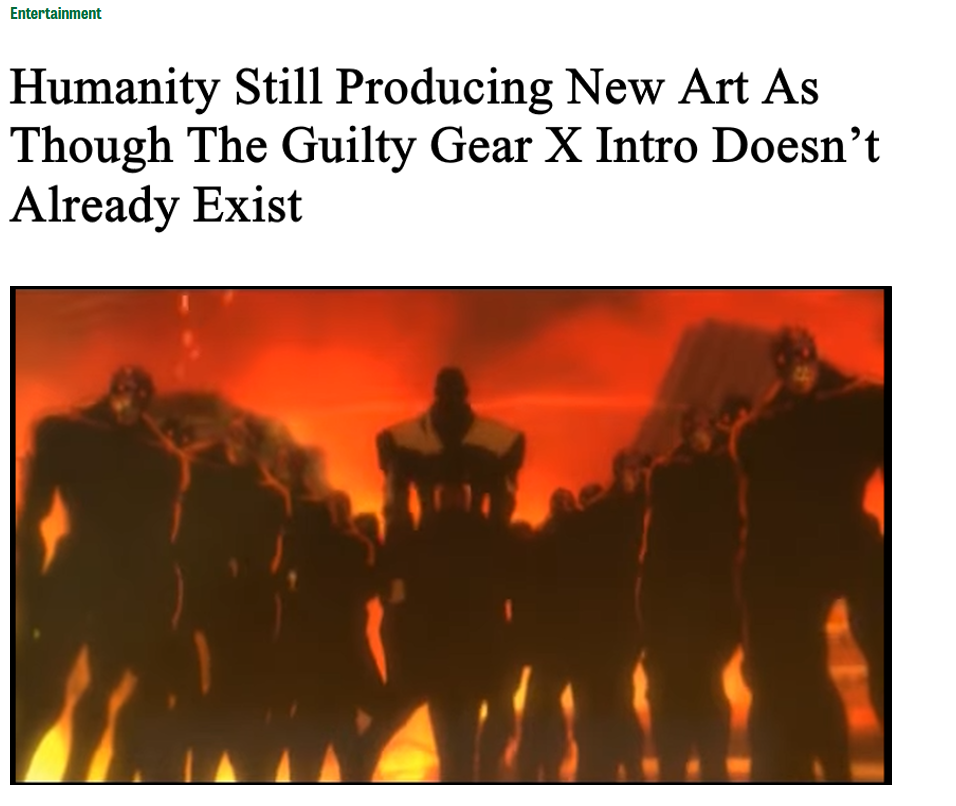
In the episode, newly introduced character, Unika, wakes up injured from a fight and finds herself being nursed back to health by Bridget. Their unfolding relationship and exploration of Unika’s motivations forms the bulk of the episode but I want to focus on two scenes in particular.
Fellas, is it....
This setup should be familiar to anyone that’s watched a romantic-comedy anytime in the past forty years or so. Unika wakes up in the morning and the camera shifts to her blurry perspective. In the distance, she can see Bridget in silhouette as she bathes herself in a nearby body of water. According to the usual script, this would be the time for Unika to make a noise alerting Bridget who then reacts with “humorous” anger or embarrassment. A laugh track plays and the story moves on. Instead the camera cuts back between Unika and her view of Bridget as her eyes gradually focus and the sun comes out to brighten the scene. Eventually, Bridget notices she’s being watched. She covers her chest with one hand and waves good morning with the other. End scene.
What struck me first in watching this scene is how Bridget’s body is depicted. Compared to other characters in the series, her body-type stands out. Compared to the other women in the series, her hips are a bit narrower and her shoulders a bit broader. If she has a chest, it’s quite modest. It’s a body type you rarely see depicted in media and one I’ve gotten used to seeing in the mirror. I imagine it’s also a familiar sight to other trans women. Even in the blurry silhouette, I was struck by how distinctly trans Bridget’s body is and how much effort must have gone into considering how to approach this scene. There are also little mannerisms peppered throughout the episode that registered as uncomfortably familiar. Bridget’s transness is embodied throughout the episode without ever being directly commented on.
The first two examples of other media that touch on similar bodies that first come to mind for me are Kei Murota in Shuzo Oshimi’s Welcome Back, Alice and Ryuji "Yuka" Ayukawa in Tsubasa Yamaguchi’s Blue Period. In both of these cases, the character in question is more appropriately described as gender non-confirming with a femme leaning presentation. Also in both cases, the character struggles to love themselves and their bodies. In Welcome Back, Alice, Kei poses in the nude for a portrait. Even though the nudity was their own suggestion, they confess that they see their body as something “wishy-washy” and not something they think they will ever be able to love. It’s unfortunately common to see these types of bodies associated with feelings of shame, remorse and pain by the people inhabiting them.
In contrast, this scene between Unika and Bridget has a decidedly brighter tone. There is no dialogue shared between them. We just see Unika’s eyes widen as she looks on and the sun comes out from behind the clouds. Without context, comment or qualification, I can only read this scene as Unika looking out and admiring the woman in front of her. I’m not gonna speculate about the genitals of fictional characters but whatever Bridget has is also fully on display potentially outing her as trans but none of that seems to matter. Her body is normal and beautiful. Rather than reacting to being seen with embarrassment, shame or even the dreaded apology, Bridget seems at peace with herself. Even though Bridget being trans is never directly mentioned in the episode, knowing that adds depth to this short interaction while also grounding it as something mundane; a normal exchange between two women.
At the close of the episode, Bridget and Unika have a final exchange around the idea of “finding your shape.” Again, Bridget being trans is never directly stated but I imagine most viewers tuning in to Dual Rulers already know. Even if they don’t, the idea of trying out different things in order to find out who you are is still a message that should resonate with just about anyone. Having Bridget deliver the message gives it an undeniable queer reading but it’s expressed in a way that could help connect the experience of trans and cis people. Maybe I’m overly optimistic but I’m still a believer in the power of media to act as a starting point for building genuine empathy.
I also expect the framing of gender transition as a process where you take risks, make mistakes and sometimes end up somewhere different than you expected has a special resonance with trans viewers. Nobody really knows what they’re doing even if it might feel like you’re the only one that doesn’t. This shit is messy and sometimes we all need a reminder to be nicer to ourselves for inevitable stumbles and unfortunate bangs.
TV anime is expensive to make and screen time is precious. Bridget is popular enough that the team behind Dual Rulers could have tossed in some light comedy or fanservice and called it a day but instead they decided to tell this story. Even if the show takes a nosedive from hereon, I’ll still be thinking about this episode for a minute.
— — — — — — —
I’ve been sitting here trying to decide on how to close this thing. Like a sandwich cut into a square, unlike the Jon Moxley endorsed triangle-cut, there’s just too many points of entry. Should I start talking about the character herself, the community engagement, the company’s support or maybe my crowded shelf of Bridget merchandise? There are a lot of different routes to take but thankfully they all lead to the same place; joy. At a time that is shaping up to be a historically difficult time to be queer, trans joy has been in short supply. Whether in the character herself or the people who have found community in the fandom around her, following the story of Bridget in canon and culture has been a bright spot on an increasingly clouded day. Even on dark days, I usually just have to search through hashtags for the character to find even just a little bit of joy. Sometimes that’s just what you need to get through the day. It’s also a story that’s still being written and I hope will continue to spread that joy around.
Until my next entry. Be nice to yourself.
